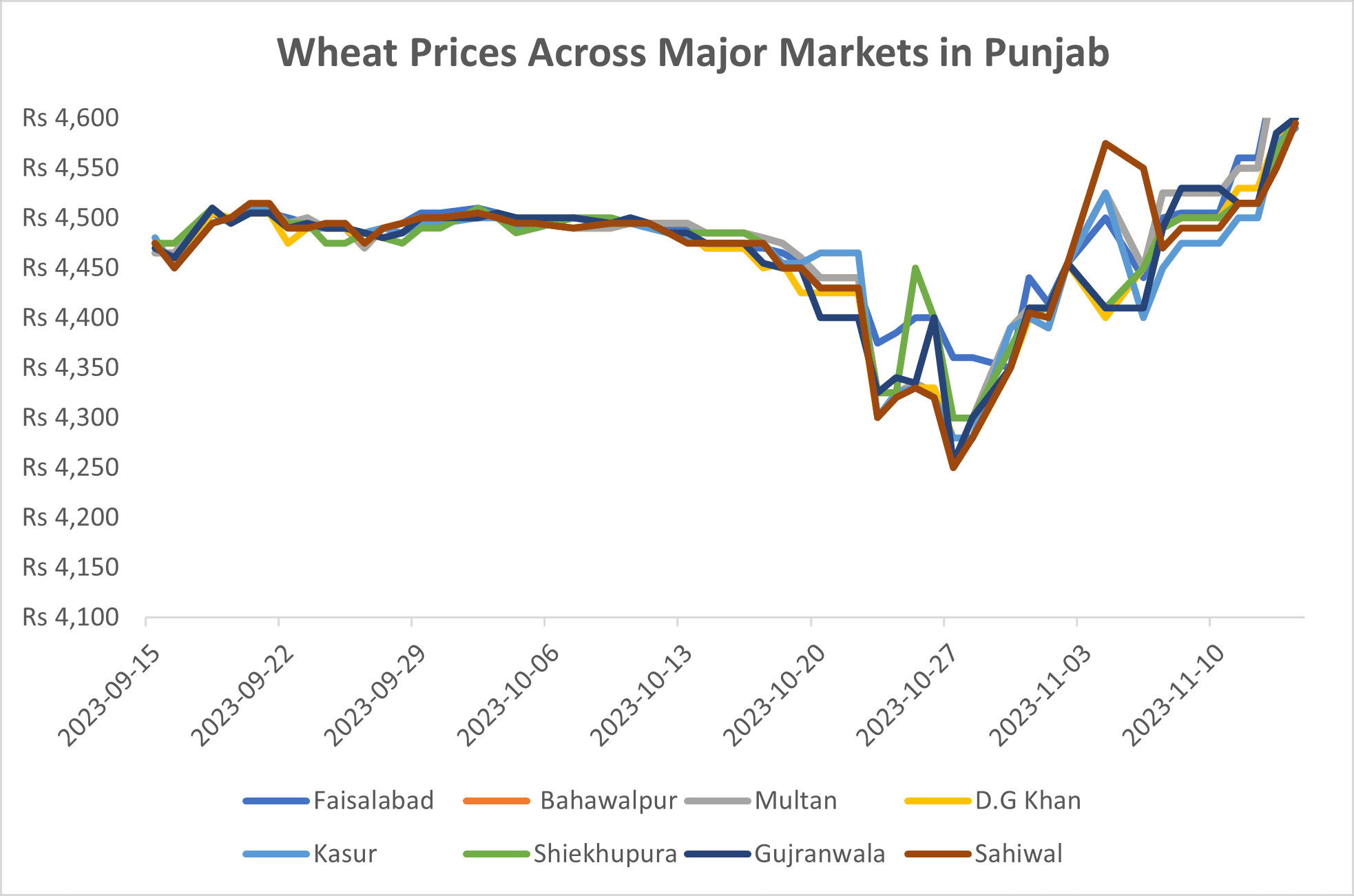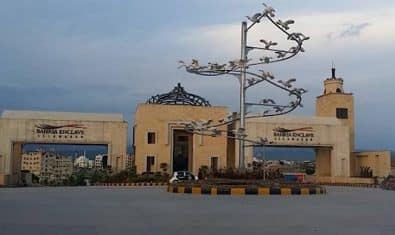The wheat saga reached its conclusion last week (for now) as the Punjab government announced the long-awaited wheat release price, fixing it at Rs. 4,700 per maund (40kg) for flour mills.
The 10kg flour bag is set to be available at Rs. 1,399.
This development laid bare the deep divide within the flour mill industry, with one faction led by Central Chairman Asim Raza, threatening a boycott due to the significant gap between the support price for wheat procurement (Rs. 3,900) and the price set for millers.
On the opposing side, a group, likely composed of Sindh Flour Mills and a substantial number of Punjab millers, welcomed the decision and the Rs. 4,700 per maund price, asserting that the government has the legal authority to establish wheat release and flour prices.
It’s worth noting that flour mills generally have pricing autonomy throughout the year, except for specific months when the government regulates wheat release to mills at controlled rates and sets flour prices province-wide.
The confusion began with premature news of a wheat import vessel reaching Karachi, followed by misinformation about the Punjab government announcing a wheat release price of Rs. 4,450 on October 15.
Subsequent delays and conflicting reports led to market fluctuations, with prices initially dropping to Rs. 4,200 and then rising due to speculative price hikes fueled by news of a release price between Rs. 4,300 and 4,600 per maund. The wheat prices across Punjab have since been on a rising trend and the irony is that decision supposed to provide cheap flour is actually fueling the wheat price rise.

Ultimately, the Pakistan Flour Mills Association (PFMA) central body announced its compliance with the wheat release price decision, emphasizing adherence to the government rate.
However, the PFMA also advocated for opening wheat procurement to the private sector during the harvest season to eliminate hoarding and irregular price movements.
There has been much debate at the policy level about ending the government’s involvement in wheat procurement and it has its merits. It fuels a circular commodity debt at the provincial level that stood at Rs. 680 billion in June 2023 and still fails to ensure the price irregularities in the market.
According to the October CPI Data by the Pakistan Bureau of Statistics, the price of a 20kg bag of flour jumped by nearly 78 percent year-on-year to Rs. 2,756 from Rs. 1,541 in October 2022.
While this increase can simply be thrown upon the hike in support price of wheat, the price increase is the natural function of the market that will happen anywhere, maybe more in our uncertain economic environment but that leaves the whole government operation of procuring wheat and releasing at a controlled rate totally moot.
“Government must reduce its footprint in the wheat market and direct the roughly Rs. 200 billion spent every year on wheat procurement operations to research & development,” stated Dr Abedullah Anjum, Head of Research at Pakistan Institute of Development Economics while talking to ProPakistani
He proposed that the government can use the 20 percent rule (10 percent in transportation charges and profit margins respectively both imports and exports) entailing that if the local market prices increase 20 percent above international prices, then the imports will be opened to protect consumers. But if the prices reduce by more than 20 percent about the international market, then exports can be opened to protect the other side.
He also called for opening and documenting the commodity trade with Afghanistan under the barter mechanism since the latter lacks’ dollars for trading with the international market and it can be a business opportunity for Pakistani as well.
But the other side argues that while the whole may not have worked for the consumers, farmers have been getting some benefit from Wheat prices. It has started to function as a de facto social security net for farmers, something they can hedge against and repealing it would be a disaster without providing an alternative to safeguard farmers and prevent their exploitation.
Support Price at Rs. 4,000: Another Blunder?
There has been another announcement during this whole fiasco and that’s the wheat support price of upcoming wheat harvesting next year. The Sindh government has kept the price unchanged at Rs. 4,000 per maund while Punjab has also marginally raised the price by Rs. 100 to set it at par with Sindh at Rs 4,000 per maund.
Market analysts are baffled at the decision given the fact that prices are already touching Rs. 5,000 per maund in the local markets, wondering how the government can set a support price for the upcoming harvest lower than the current market prices. Experts believe that the government will have to revise the support as the harvest will come close.
“It’s also possible that it’s an attempt to signal the market that prices should come down, not that has worked in the past. If it’s not revised, we may see the same drama of government raids on farmers and dealers to recover the Wheat that we witness every year,” added Anjum.
Farmers argue that the cost of all agriculture inputs and utilities like diesel and electricity have gone up significantly in the past year and farmers will have to be compensated for that.
“Government should announce the support price between the current market price bracket of Rs. 4,700 to Rs. 5,000 per maund as that’s where the prices may stabilize by next year”, stated Muhammad Usman, Founder Roshan Kisaan Cooperative while talking to ProPakistani.
He added otherwise stabilizing the market next year would be a bigger challenge for the government given the fact that it’s already out of control. Considering that the wheat crop serves as the only functional social security net for farmers as we talked about earlier, that argument is more than valid.
As much as our governments love to regulate the markets, there is no rule of law or reliable data-gathering operations across the grain markets. The commodity prices are driven by rumours the whole year, farmers remain to be price takers and exploitation continues at one point or the other.
The job of the government is not to choose farmers over consumers, importers over producers or vice versa, it’s to create a friendly business environment with the least direct involvement and reduce exploitation and fraud at all levels.
The government needs to immediately work towards digitizing the grain markets which won’t only help in documenting the sector that contributes a quarter of national GDP but is nearly absent in the direct taxes and will remove exploitation but will also help in establishing a functioning commodity exchange market and completing an ecosystem of ‘free and fair’ agriculture trade.





















